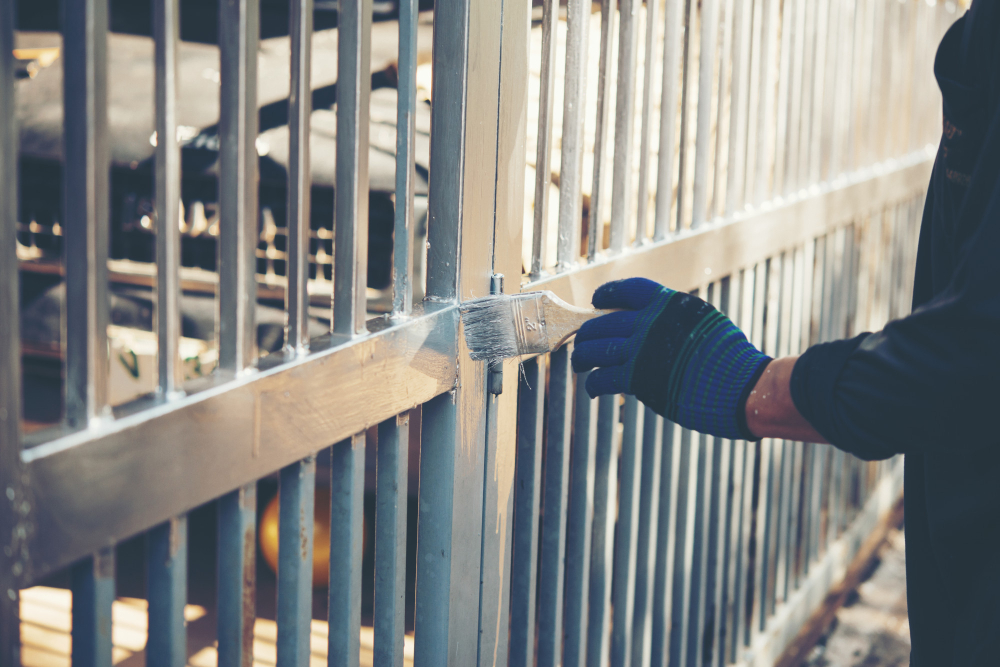The Ultimate Guide to Maintaining Your Fence

A fence plays a vital role in enhancing the curb appeal of your property and providing security, privacy, and protection to your family and pets. And, like all the other parts of your property, a fence also requires regular maintenance to prevent damage, prolong its lifespan, and prevent unwanted costs. Maintaining your fence is not just about painting it every few years or replacing the damaged parts. It involves a series of routine checks and necessary repairs to keep your fence in top-notch condition. In this blog post, we’ll discuss the ultimate guide to maintaining your fence, from routine inspections to essential repairs.
1. Cleaning your Fence
Cleaning your fence regularly is one of the most important steps to keep your fence looking new and fresh while preventing mold, mildew, and other buildup that can eat away the finish. Regular cleaning also helps to remove debris and other particles that could lead to mold growth. You can use a mixture of soap and water to clean your fence and a pressure washer or a soft brush to remove stubborn dirt and grime. Avoid using harsh chemicals or abrasive cleaners that can damage the finish.
2. Inspecting your Fence
Inspecting your fence annually is another vital step to keep your fence looking and functioning at its best. Inspect your fence for cracks, rot, loose or broken boards, and rust. Check the fence posts to ensure they are sturdy and not leaning. If you find any damage or issue, arrange to fix it as soon as possible. This will help prevent further deterioration and protect your fence from costly repairs or replacement.
3. Painting and Staining your Fence
Painting and staining your fence is also important to keep the fence fresh and prevent it from wearing down. A fresh coat of paint or staining on your fence can make your fence look new again, and it also acts as an added layer of protection against elements like moisture, heat, and insects. You should paint or stain your fence every two to three years, depending on the type of fence you have, or when the previous coat is peeling, fading, or cracking.
4. Trimming the Trees and Plants
Trimming the trees and plants near your fence is beneficial to both the plants and your fence. Overgrown plants can damage the fence with rubbing or warping, causing it to deteriorate quickly. On the other hand, trimming trees and plants regularly keeps them healthy while reducing the chances of them damaging your fence. It is also advisable to keep a distance of about 2 feet between your fence and the trees or plants nearby to prevent damage.
5. Hiring a Professional
If you’re not handy or do not have time to maintain your fence, you can hire a professional fence contractor to do the job for you. Professional fence contractors have the knowledge, experience, and equipment needed to maintain your fence, preventing the need for costly repairs and replacements. They can also offer advice on the best practices for maintaining your fence and save you time and effort.
Conclusion
Maintaining your fence is crucial to enhancing its longevity, keeping it looking great, and providing security and privacy. Regular cleaning, inspection, painting, and trimming of trees and plants near your fence are some of the best practices for maintaining your fence. If you do not have the time or expertise to maintain your fence, consider hiring a professional fence contractor. With proper maintenance, your fence will stand the test of time, adding value to your property for years to come. Therefore, regular fence maintenance should be treated as a critical part of maintaining your property. If you're looking for fence contractors in Daytona Beach, FL, contact Byers Fence today to schedule an appointment.